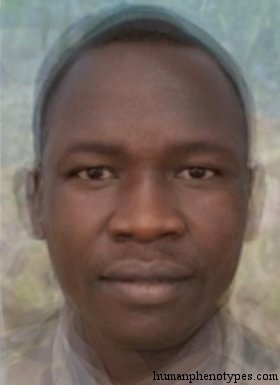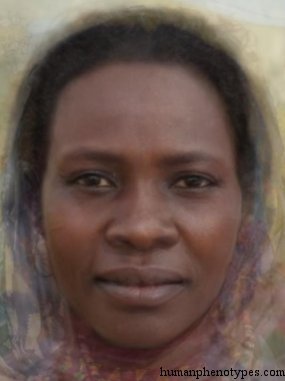Description
Isolated Sudanid variety of the Nuba mountains in Kurdufan / Sudan, native to the region at least since the Neolithic. Has resisted historic invasions of neighbouring types over a long time. However, even in isolated villages, Nilotid, Congolid, and Orientalid admixture is common. A minority type in Fur, Kresh, Yulu, Nara, Kunama, and even Southern Egyptians.
Physical Traits
Height: Tall
Build: Mesomorph
Legs: Long-legged
Skull: Mesocephalic, sometimes dolichocephalic
Skull height: Mildly hypsicranic
Face: Large with relatively narrow eyelids
Frontoparietal region: Flattened
Nose: Hyperplatyrrhine
Lips: Bulging
Prognathism: Moderate
Body hair: Weak
Skin: Dark brown, sometimes black
Hair texture: Usually kinky
East Sudanid represents an isolated Sudanid variety that has maintained its distinctiveness despite geographic isolation. The skin is dark brown, sometimes black, usually with kinky hair typical of the region. The stature is tall with long legs and a mesomorph build. The skull is mesocephalic, sometimes dolichocephalic, and mildly hypsicranic (high-headed). The nose is hyperplatyrrhine (very broad). The face is large with relatively narrow eyelids and bulging lips. The frontoparietal region is flattened, a distinctive feature of this type. Prognathy is moderate, and body hair is weak. Despite its isolation, admixture with neighboring Nilotid, Congolid, and Orientalid types is common, even in isolated villages.
Literature References
The East Sudanid type has been documented by several anthropologists studying the populations of the Nuba mountains, with detailed analyses of this isolated variety.
- Stuck (1920) - Described as Kurdufan type A
- Seligman (1910b, 1932) - Conducted detailed analyses
- Eickstedt (1943) - Noted very defragmented eastern Sudanid elements in the region
- Biasutti (1967) - Described the type as a "Northern variety of Sudanid"








